
This Rawktober, Trick or Treat—We Feed Raw Style!
Table of Contents
This month, we’re celebrating Rawktober, a time to educate people about the benefits of a raw, meat-based diet for dogs. Halloween is the biggest holiday of Rawktober, so let’s discuss some of the “tricks” Big Pet Food is playing on consumers and some of the “treats” associated with feeding a raw diet.
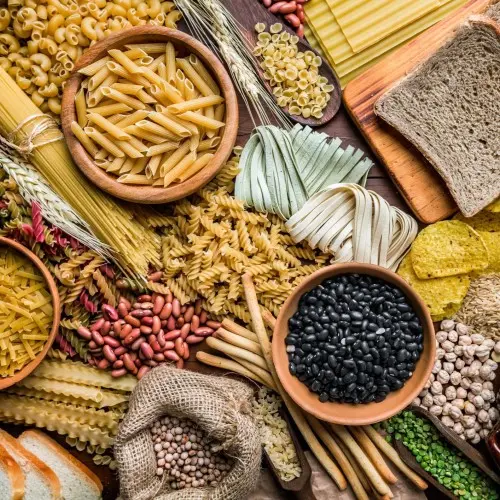
Tricks
While some commercial dog foods are worse than others, all kibbles (and most canned foods) tend to have most of these “tricks” in common. The more raw or fresh food you can feed your dog and the less kibble or canned food you give them, the better their overall health is likely to be.
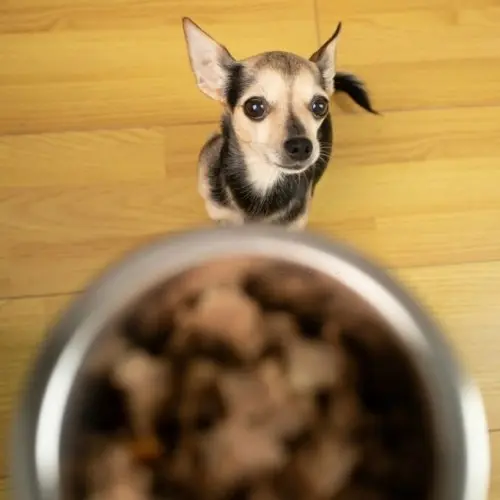
High Carb Content
Dogs have NO nutritional requirement for carbohydrates, yet kibble contains an average of 30-60% carbs. Not only are carbs cheaper than proteins, but kibble requires a high level of carbohydrates to form the familiar crunchy pellets.
You might think those carbohydrates provide nutrients, or are harmless at worst, but that couldn’t be farther from the truth.
In fact, the top 4 issues dogs struggle with in North America (cancer, diabetes, obesity, and allergies) are exacerbated by carbs.
Ingredient Splitting
Pet food companies split less desirable ingredients (rice, corn, etc) into smaller parts, lowering their place on the ingredient list, which deceptively boosts the placement of healthy ingredients like meat.
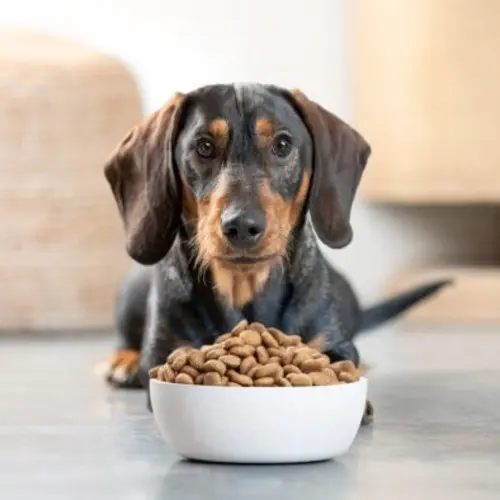
Highly Processed, Lifeless Food
The high heat required to make kibble destroys the nutritional value of the ingredients so much that synthetic vitamins need to be sprayed onto the kibble to replace all the nutrients lost during the cooking process. Additionally, the reason kibble and canned food are shelf-stable is because they’ve been completely sterilized, meaning even beneficial bacteria strains have been killed during the cooking process.
Since raw food is minimally processed, the bulk of the nutrients in the food comes from muscle meat, organ meat, and bones. Additionally, the cold-pressure process We Feed Raw uses to eliminate pathogenic bacteria also spares beneficial bacteria strains such as lactobacillus, making our food more natural and beneficial than most commercial foods.
Plant-Derived Proteins
Dogs are designed to get the bulk of their nutrients from meat, but highly processed commercial food is full of plant proteins like soy, wheat protein, corn protein, potato protein, and pea protein.
“4D” Meat
“4D” meat, which is allowed to be used in pet food but not in food intended for human consumption, includes animals that arrived at the slaughterhouse “down, dying, diseased, or dead.” In addition to the potential problems associated with feeding dogs meat from animals that may have died from disease rather than slaughter, 4D meat must be denatured, a process that stains meat to indicate that it’s unfit for humans to eat.
The chemicals used to denature 4D meat may contribute to long-term health problems in pets, and it’s impossible to know how much chemical residue the meat absorbs during the denaturing process.
Misleading Label Pictures
An image of a juicy steak on the front of a kibble bag sadly doesn't equate to high-quality USDA beef inside the bag. The food may be predominantly made from plant ingredients with just a hint of beef flavoring.
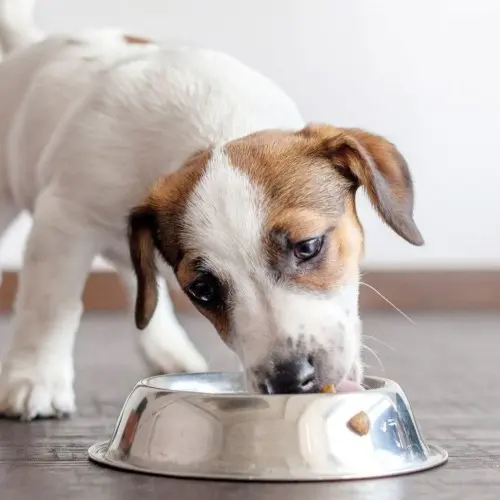
Low-Quality Ingredients
Despite marketing claims to the contrary, kibble is made for the convenience of the pet parent and the profit of the manufacturer, NOT the health of pets. The cheaper the ingredients they use in the food, the more of a profit the companies can make.
Low-quality ingredients commonly found in commercial dog foods that offer little to no nutritional value include:
•Corn syrup
•Soybean meal
•Beef & bone meal
•Animal digest
•Wheat middlings
•Corn gluten meal
•Egg and chicken flavor
•Chicken liver flavor
•Dried beet pulp
•Soybean oil
•Brewers rice
•Egg product
•Rice starch
•Ground pecan shells
•Dried citrus pulp
Contamination
Even “super premium” dog foods can be contaminated, as is evident with the recent recall of Victor Super Premium Dog Food, Hi-Pro Plus, which was recalled on September 3, 2023, due to potential salmonella contamination.
While nearly every big pet food manufacturer has had at least one recall due to contamination, We Feed Raw has never been involved in a recall. We use a cold-pressure process to eliminate any potential pathogens, then store and ship our food frozen to keep it safe.
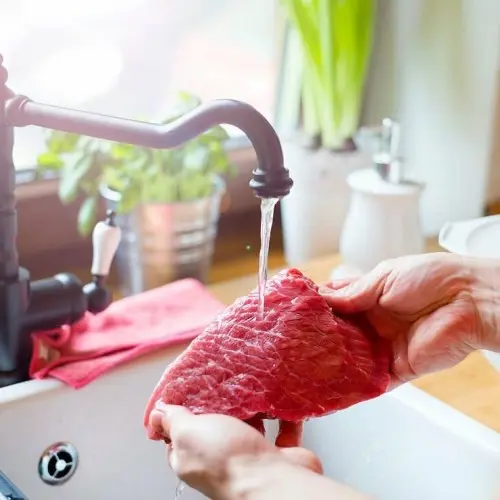
Using Highly Refined Carbs as Cheap Filler Ingredients
Dogs have no nutritional requirement for carbs, but they’re cheap ingredients that add bulk to pet food while offering little nutritional value.
Low Moisture
Kibble only contains an average of 5-10% moisture, forcing pets to drink a lot of water from their bowls to stay hydrated. Cats and dogs are meant to get most of their moisture from their food, which is why so many kibble-fed pets are prone to bladder stones and other health conditions associated with chronic dehydration.
Prey animals typically contain about 70% moisture, which is why a moisture-rich raw diet better mimics dogs’ and cats’ ancestral diets and is better for them overall than kibble.
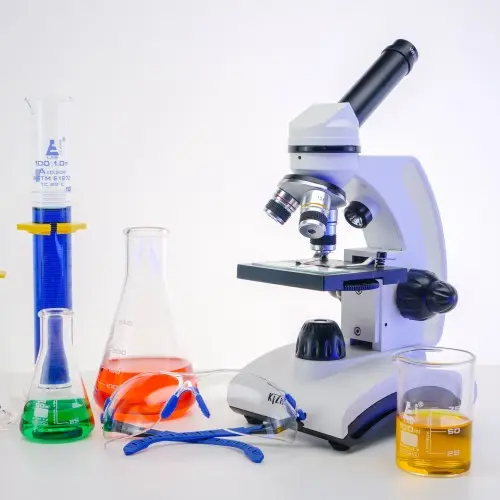
Added Chemicals and Colors
Dogs see fewer colors than people do, yet kibble often contains food dye and other unnecessary chemicals. The more chemicals are in your dog’s food, the more likely they are to suffer adverse reactions ranging from simple allergies to deadly cancer.
Since raw food is less processed than most commercially prepared dog food, it contains no artificial colors and far fewer chemicals than other food types. We Feed Raw contains no fillers, preservatives, or artificial colors or flavors.
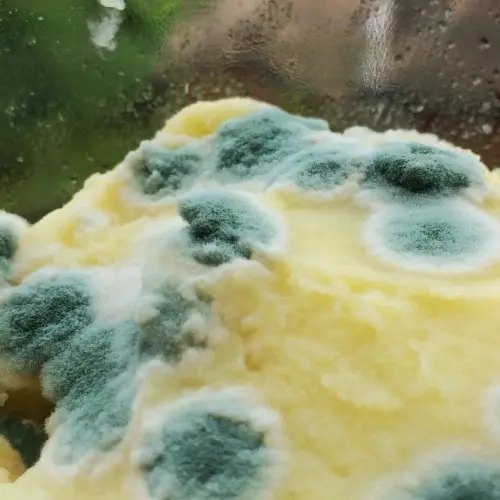
Goes Rancid Quickly
Although kibble is touted as being shelf-stable for extended periods, the fats in and sprayed on the food actually start to turn rancid as soon as you open the bag, and the whole bag goes bad within 2-3 weeks. Long-term consumption of rancid fats can lead to vitamin deficiency, diarrhea, malnutrition, liver disease, hair loss, kidney disease, cancer, reproductive problems, and more.
While raw dog food isn’t shelf-stable, it can stay frozen for up to a year and stays fresh in the fridge for up to 3-4 days, so there’s little chance of you feeding your dog rancid meat.
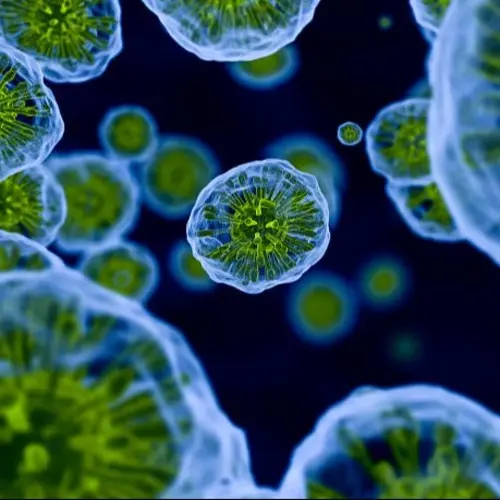
Toxins
From grains contaminated by mold to carcinogens created during the high heat process required to make kibble, canned and dry pet foods can contain a wide range of toxins, including:
•Aflatoxins: carcinogenic molds that commonly afflict wheat, corn, rice, legumes, and nuts often found in pet foods
•PBDEs (polybrominated diphenyl ethers): these flame-retardant chemicals are found in much higher concentrations in dog food samples compared to meats sold for human consumption
•Acrylamides: formed by the high heat required to make kibble as well as the lack of remaining moisture in the food, acrylamide has been classified as a “probable human carcinogen” by the International Agency for Research on Cancer (IARC) and “likely to be carcinogenic to humans” by the US Environmental Protection Agency (EPA)
•Heterocyclic amines: a result of cooking meat and fish, heterocyclic amines are mutagenic, cancer-causing substances often found in dog food
Treats
Now that we’ve learned about some of the common “tricks” Big Pet Food likes to play on consumers, let’s talk about some of the “treats” associated with feeding your dog a species-appropriate raw diet.
Fewer Skin Problems

Studies are starting to show that puppies fed a raw diet (especially if their mother also ate a raw diet while pregnant and nursing) are significantly less likely to develop canine atopic dermatitis (CAD) as adults. Additionally, the high level of fatty acids in a raw diet helps provide dogs with healthier skin and shinier fur.
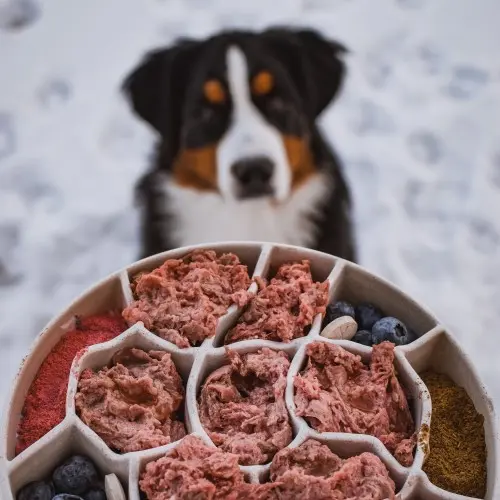
Fewer Gut Problems
Puppies fed a raw diet are less likely to develop inflammatory bowel disease (IBD) as adults, studies show. While dogs may look different from their wolf ancestors on the outside, their digestive system is still remarkably similar. Their pointy teeth, highly acidic stomach, and short digestive tract are all designed to extract the most nutrients from a raw diet versus a cooked one.
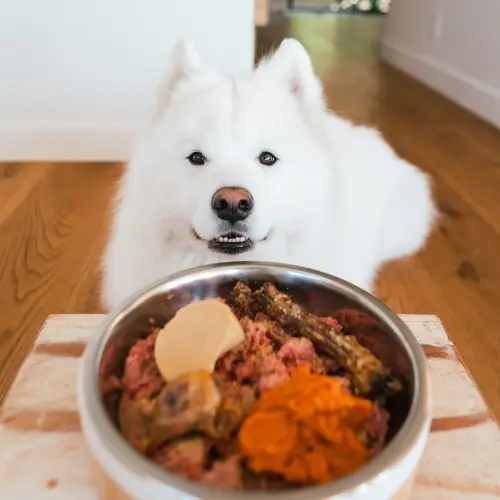
More Mealtime Excitement
Many dogs are unenthusiastic about kibble, but most dogs absolutely love raw food. You can check out customer reviews of We Feed Raw here to see real stories of picky dogs now rushing to eat their meals with enthusiasm that surprised their owners.
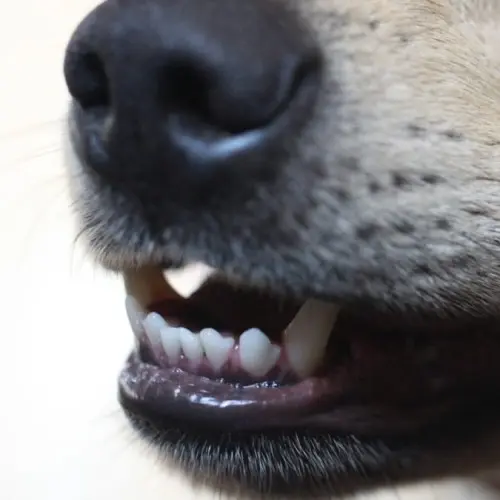
Healthier Teeth
Kibble companies want you to believe that crunching on kibble helps clean your dog’s teeth—which would be about as effective as cleaning your teeth by eating Goldfish crackers while swallowing most of them whole.
The truth is that the high starch content of kibble actually feeds the bacteria in your dog’s mouth that creates plaque and tartar. A species-appropriate raw diet, on the other hand, can help keep your dog’s teeth clean, especially if you give them the occasional raw meaty bone or dehydrated whole prey treat to help “floss” between their teeth.
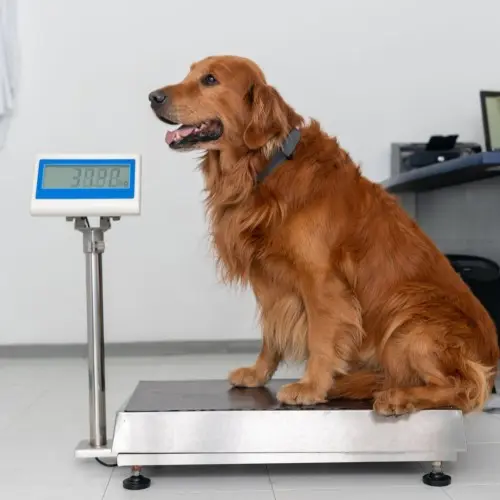
Better Weight Control
Since raw dog food is protein-rich and lacks pointless fillers and weight-gain-causing carbohydrates, it helps dogs reach and maintain a healthy weight better than highly processed kibble or canned food.

Stronger Immune System
Did you know the gastrointestinal tract is involved in about 70-80% of your dog’s immune system? That means a healthier gut = a stronger immune system. Dogs are biologically designed to process raw meat, not carb-heavy, highly processed kibble, so a raw diet for dogs can help contribute to a stronger immune system.

Reduced Allergies
There are two main ways that switching your dog to a raw diet can help reduce their allergy symptoms:
•Since raw dog food is richer in healthy fatty acids, dogs on raw are less likely to struggle with dry, flaky, itchy skin.
•Because a raw food diet for dogs is naturally limited-ingredient, it’s easier to avoid a dog’s food allergy triggers.

Moisture-Rich
Dogs on raw food tend to drink less water from their bowls because they get most of their water needs met by the moisture in their food. Since dogs on raw are less likely to struggle with chronic low-level dehydration, they tend to be healthier and happier than kibble-fed dogs.
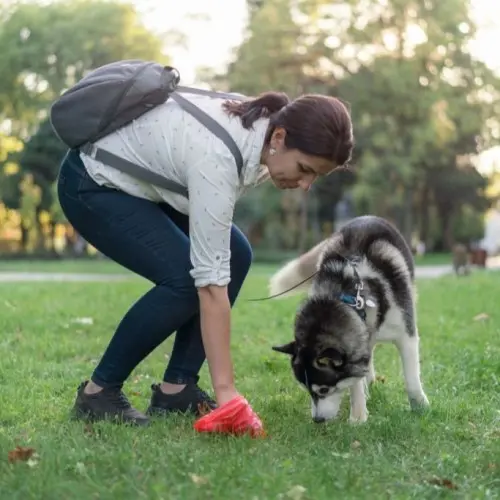
Smaller, Firmer Stools
Nobody enjoys picking up dog poop, but the job is much less awful when your dog is on a raw diet because their stools are smaller, firmer, less frequent, and even less stinky. That’s because their body is using more of the food for energy and not eliminating a lot of waste caused by filler ingredients.
Make the Switch to Raw
Ready to switch your dog to all the benefits of a raw diet? We Feed Raw makes it easy. We send you pre-portioned packets of nutritionally complete and balanced raw food and tell you how much to feed your dog each day. All you have to do is thaw and serve!
Find out how much it would cost to start your dog on raw now.
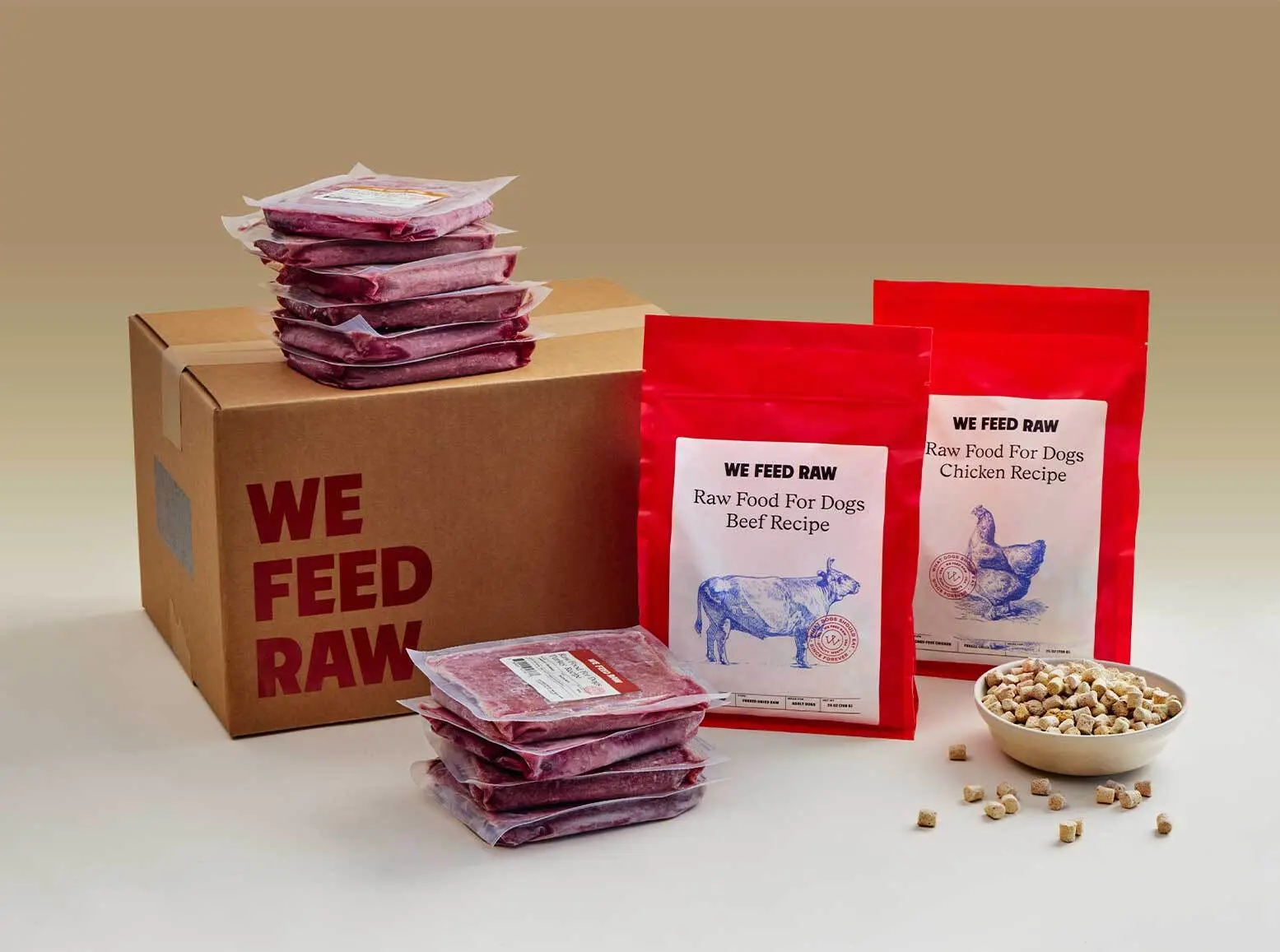
Our Meals Change Lives.
(Theirs + Yours.)
See health improvements from our raw meals in as little as 1 week.
